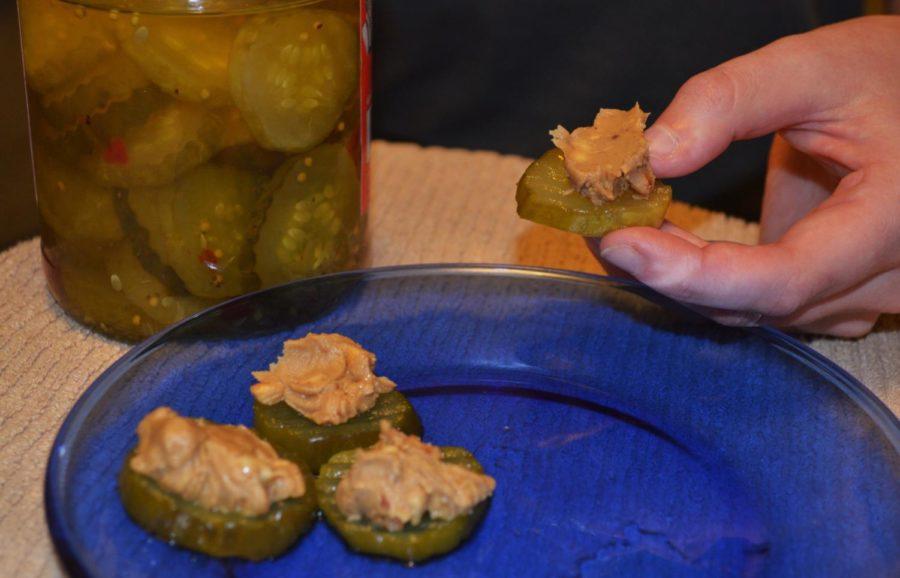Scientists use sense of taste to create healthier foods
By Claire Powell/AmesEats Flavors
Peanut butter and pickles, along with other complex, salty foods, are craved by “super tasters” with stronger taste receptors in the back of their tongue.
January 23, 2013
Taste buds are lined across our tongues, helping us detect the slightest hints of flavor, but we can only taste certain flavors in certain locations.
When you bite into a lemon, the taste buds on the sides of the back of your tongue are put to work. The tip of the tongue is where sweetness is tasted, and right behind the tip of the tongue is where the salty taste receptors are located. For those who like coffee and caffeine, that bitterness you crave comes from the very back region of your tongue.
Scientists are putting to good use the way we taste foods by working to find different flavor combinations to create healthier food consumption amongst consumers.
“Ingredients such as Sichuan peppercorns, chili powder and tamarind powder spice blends have been evaluated and can be used to help reduce sodium in certain foods by up to 33 percent, without compromising liking,” according to Chris Long, researcher for the Culinary Institute of America.
Long, among other chefs who feel consumer pressure to produce healthier dishes, are finding ways to substitute salt and fat. To do this, they target specific taste receptors and look for molecules in foods that trigger them.
The heat of the chili peppers and cooling of the peppercorns was well-liked by consumers in a sensory analysis done by Long. The consumers didn’t feel the need to add salt and thus reduced their sodium consumption.
Scientists are also testing flavors which might be able to trick the brain into thinking a food is sweeter than it actually is and decrease sugar consumption.
“Some odors such as strawberry, vanilla, lemon, almond [and] caramel … enhance the sweetness of sucrose or aspartame,” according to a 2004 study published in the Oxford Journals.
Not all tongues are created equal and taste can be different among people. There are some people who researchers refer to as “super tasters,” says Stephanie Clark, associate professor in food science and human nutrition.
“Research has shown that super tasters typically have additional taste buds, enabling them to perceive basic tastes, particularly bitter compounds, at lower concentrations than average consumers,” Clark said. “Super tasters may also be more sensitive to other compounds as well.”
This could explain why some people love the heat of spicy chicken wings, and others opt for honey barbecue or why some crave the saltiness of pickles and peanut butter.







